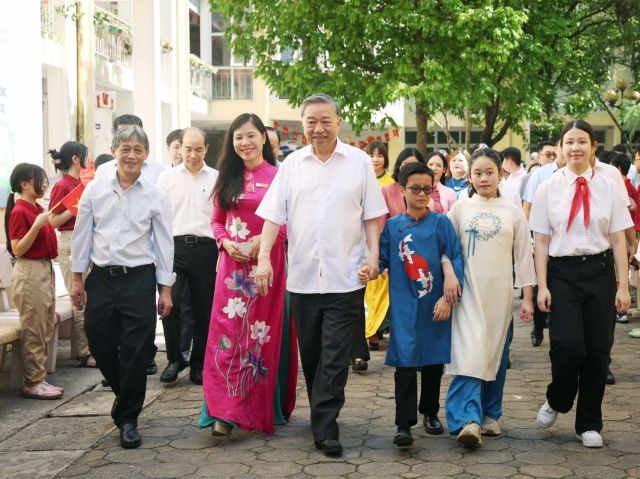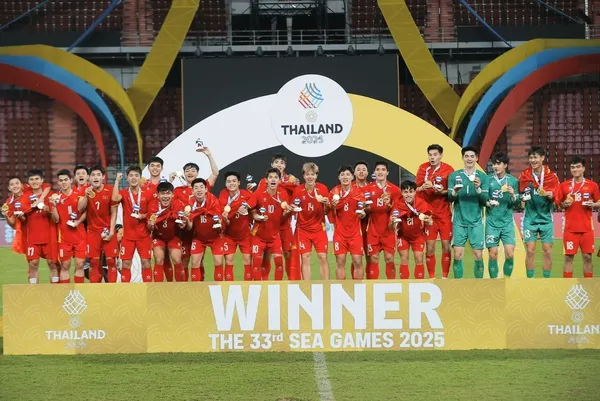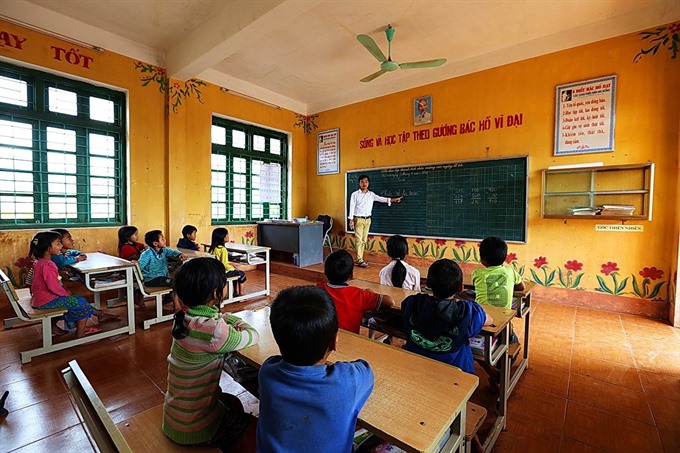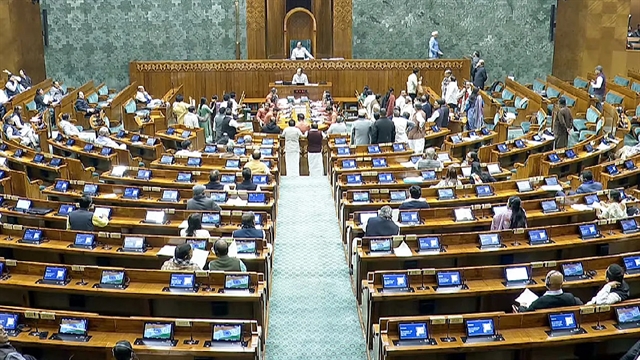 Opinion
Opinion

Việt Nam, as a member of the United Nations, needs to observe The International Day for the Elimination of Racial Discrimination with some serious introspections and self-criticism.
 |
| A classroom for ethnic minority students in the primary school Trần Văn Thọ in the mountainous commune of Mường Nhé in northern province Điện Biên. — VNA/VNS Photo Phan Tuấn Anh |
Trọng Kiên
Among the plethora of International Days that we observe, one whose contemporary relevance has increased exponentially is March 21, which envisages the elimination of racial discrimination. Advocated by the United Nations in 1966, the day marks the bloody massacre of protesters objecting to a highly racist piece of legislation passed by the Apartheid Government in South Africa, which would restrict the entry of black citizens into urban areas. While the most insidious forms of apartheid in that country were ended by the Mandela-led movement, with global support in the form of boycotts and other measures, it can be said very safely discrimination of all sorts are rampant in today’s world, that racism is alive and well.
We, in Việt Nam, are not free from this blight, and it would behove us, as a member of the United Nations, to observe this International Day with some serious introspections and self-criticism.
On the surface, it is difficult to imagine that there is race-based discrimination in our largely homogenous country, both demographically and culturally. But the demographic statistics by themselves show the inequal scope, with the Kinh ethnicity representing a dominant 83 per cent of the population, and the remaining 17 per cent dispersed among 53 different ethnic groups, mostly montagnards – populating resource-rich but impoverished economically mountainous areas.
As the official Vietnamese language is that of the Kinh, everything, from administration to culture is dominated by the way of the Kinh people. In such a scenario, the marginalisation of minorities can be seen as an inevitable consequence, but it is true that the Party and the State, following the lead of President Hồ Chí Minh, have consistently targeted an inclusive society, although both the rhetoric and actual policies are yet to produce the desired results.
One reason for this is that we have failed to examine certain privileges and assumptions we take for granted. For instance, if we were to ask if the Kinh people are ‘racist,’ and actively seek to discriminate against other groups, many people might not just issue a robust and vehement denial, but actually take offence at such a suggestive question.
We can point to cultural promotions like ethnic minority festivals, policies to develop rural, remote areas, particularly those inhabited by ethnic minority people, efforts to educate ethnic minority children and increase their literacy levels, provide better healthcare, and so on. But all this notwithstanding, we cannot be really inclusive and equal if we do not acknowledge an unwitting assumption of superiority and condescension that has marked this relationship. A brief examination of our history can be an eye opener of sorts.
Down memory lane
The Kinh people started out originally in the northern river delta of current Việt Nam, but throughout history, expanded towards the south, incorporating vast tracts of land originally belonging to other peoples. This process, honestly, could not have been bloodless, but, at present, the reality is that different groups of people have been living with each other in relative harmony under the Vietnamese flag. In our history, feudal dynasties had married away their princesses to the tribes as a sign of goodwill to maintain peace, and President Hồ Chí Minh paid extra attention to collaborating with border area ethnic minority groups in the wars against the French and the Americans under the banner of “great national unity.”
He had stressed how crucial the relationship and inclusion of ethnic minorities was for the country.
“The river can run out of water, the mountain can be worn away, but national unity will never diminish… The mountainous peoples must unite with each other tightly, and the minority groups must unite with the majority group,” he’d said.
This effort has continued to this day.
Programme 135, a poverty reduction programme of the Government of Vietnam on supporting the infrastructure investment and the production promotion for communes with extreme hardship and ethnic minority, by 2017, have saw support being given to 554,348 households in terms of seeds, fertiliser, and agricultural models; 2,500 infrastructure projects and maintenance of thousands of other health medical centres, water supply plants, or markets; 170 capacity-enhancing classes joined by 30,000 ethnic minority people (1,000 of which are local officials), 20,000 nomadic households having lands to settle down, and 85 per cent of the population gaining access to clean water and 100 per cent communes having their own schools.
Low-interest credit lines for production and business purposes as well as vocational training are also frequently on the spending list of the Government. Efforts have been made to bridge the healthcare gap between urban and remote areas and policies instituted to reward academic and other forms of excellence among ethnic minority groups.
It is telling that the highest, most powerful position in the country, has been held by Nông Đức Mạnh, who belongs to the Tày ethnic group. He was the General Secretary of the Communist Party for two consecutive terms, achieving this position after nine years as head of the standing committee of the country’s legislative body. If this isn’t the breaking of the ceiling, a potent counter-argument that the ‘minority group’ is somehow inferior to the majority group.
No room for denial
Despite the obvious progress, we cannot say that discrimination has ceased and socio-economic parity has been achieved. On the contrary, we can say that the gap has widened in recent times. In socialist Việt Nam, there are four dollar billionaires who’ve made it to the Forbes’ list of the world’s richest people, but there remain communities of ethnic minority people without enough food, clothing and shelter. Despite the rapid growth of the national economy over the last several decades, the development gains have not been distributed with any measure of equality, but that is not in the least bit surprising for any opponent of trickle down economics. The minority groups still make up 60-70 per cent of the extremely impoverished households in the country. Twenty per cent of the richest household holds 5.22 times the wealth of the 20 per cent of the poorest ones in northern provinces and 10.9 times compared to the ones in Central highlands. The respective figures fail to improve 10 years later, reaching 6.8 times and 12.9 times in 2010, by now, one could venture that the numbers must have gotten worse.
Education has been identified as a critical tool to help the minority groups climb out of poverty, but due investment has seen little uptick in recent years. Families can’t send their children to study when they themselves barely make ends meet. Some measures have been taken to ameliorate this problem, for example, by adding ‘priority points’ for ethnic minority candidates in the national university entrance exams, but such efforts to ‘level the playing field’ are crude and unlikely to go far.
Displacement is also a great concern. As the Government pushed for more small-scale hydropower projects in its national power strategy, a large number of people had been removed from their original living spaces. The Gia Rai ethnic minority in Krông Pa District of Gia Lai Province, for example, had to relinquish some 1,800ha of land for the Ba Hạ hydropower project in 2007. From having a decent production area to maintain a stable livelihood, the meagre compensation they received, combined with lack of viable livelihood alternatives forced many to move up to the forests and set up farms there, violating several forest protection laws just to survive. Victims of development are then victimised again as law-breakers.
The notorious incidents in Central Highlands regarding the so-called Degar Government that sought to establish a self-governed administration right within Việt Nam was a rude wake-up call. While there were hostile forces behind this unrest, we have to ask why the local communities were so easily swayed by dubious promises of politically-motivated provocateurs.
This honesty requires us to confront the fact that the majority of Kinh people still engage in what anthropologists call cultural relativism. Although this might not be done consciously, research studies show that people in the flatlands typically consider ‘upland people’ as “artless” – underdeveloped but honest and good. This is very problematic, on the lines of the ‘noble savage’ fantasy, a very colonialist sentiment deeming indigenous peoples as biologically inferior and irrecoverably less advanced.
On the other hand, unhygienic, backward, drinking problems, ignorant of (modern) production and trade practices, superstitious, even lazy and overly dependent (on external support) were still some of the still-popular preconceived notions that the Kinh people reserve for ethnic groups, despite the phenomena may no longer be as popular or put out of the context of different cultural values. Official legislations also give off the sense that the Kinh people is the oldest brother in the family-country hierarchy, which confers him with the highest position, authority as well as responsibilities to help other younger siblings to be better – a very condescending point of view, one would say, similar to the feel-good ‘white saviour complex’ so popular in Western media. No, Kinh people – let’s for the sake of convenience, might be more familiar with how the world at large works – but they are not supposed to supplant the main role of ethnic leaders in caring for their own groups. What we do is striving our best to provide them with the experience and knowledge of a ‘template’ we have at our disposal, so they can gather voices from the community to transform the standard-issue template into a customised model that fits the group’s identity, value, and practical conditions.
In our policy-making processes, let’s not make the voices of a few ethnic minority members in the legislature a statistical presence and impose a well-intentioned but ultimately arbitrary policies upon those “who don’t know any better.”
For all the talk about leaving no one behind, our society will be the poorer, if we do not deal with our prejudices honestly and learn to respect other people for who they are, respect their knowledge systems instead of labelling them as backward, recognise that their cultural norms have the same validity as “ours”, that until we see them as us, we will, in some way, allow racism to survive. — VNS

.jpg)


